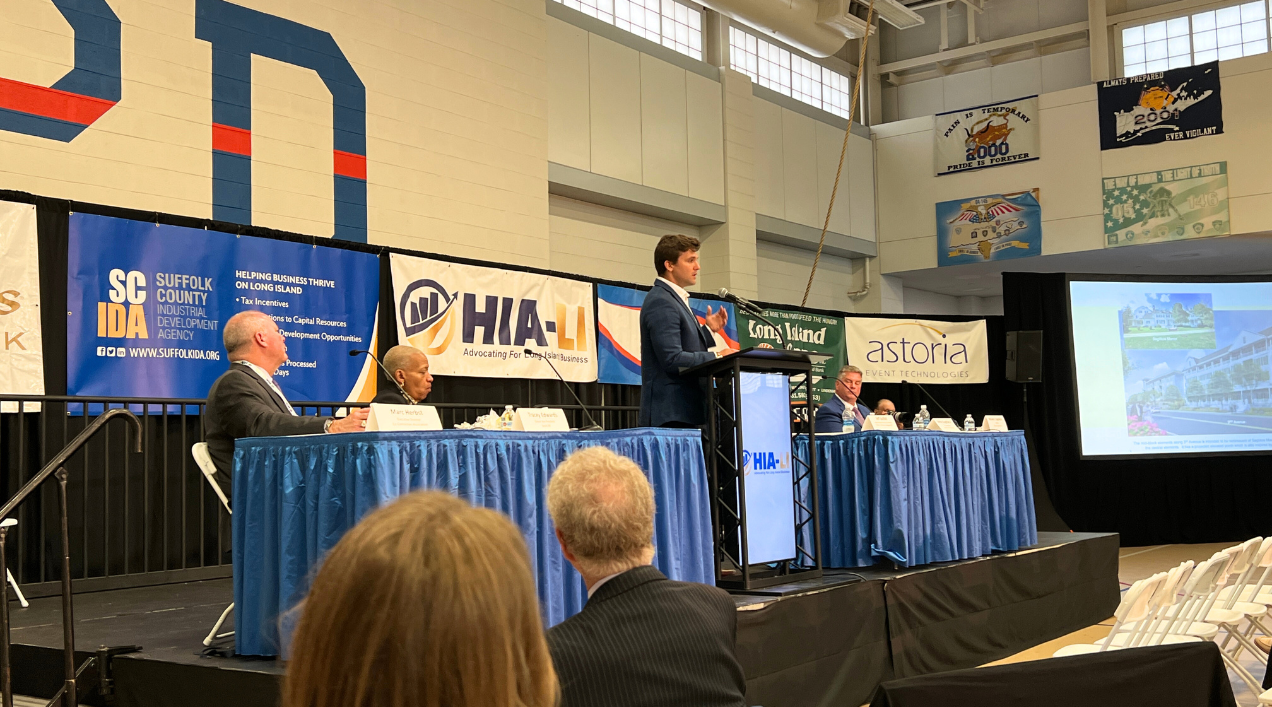Long Island’s economy is transforming, its downtowns are growing, and according to Marc Herbst, executive director of the Long Island Contractors’ Association, much of the positive change stems from the region’s deeply ingrained culture of “no” coming up against a formidable foe.
“TRITEC is the slayer of NIMBYism,” Herbst said at last week’s HIA-LI Trade Show executive luncheon in Brentwood, where he moderated a panel discussion focusing on Long Island’s changing economic landscape.
Thanks to the company’s vision of rejuvenating Patchogue with its New Village mixed-use development, Herbst said, Long Island has the blueprint to build housing and economic centers and break through NIMBY barriers. “Now we have downtown environments where people are thriving, they are using mass transit to get there, and they are buying apartments and homes to live there.”
TRITEC Executive Vice President and Partner Jimmy Coughlan gave the crowd of business leaders and professionals a glimpse of the company’s latest developments at Shoregate in Bay Shore and Station Yards in Ronkonkoma. Both projects have converted blighted or underutilized sites into attractive residential and social centers that address Long Island’s deep housing supply shortage. Together the two developments are projected to create nearly 2,000 homes.
But Coughlan stressed that meeting Long Island’s housing needs remains an uphill battle due to the “additional burdens” unique to the region.
“There are people who think the solution to our housing crisis is to tack on legislation,” Coughlan said. “Ultimately what that does is prevent projects from getting started, and when those projects don’t get started, supply is constrained and the costs just continue to go up.”
Coughlan used Austin, Texas as an example of how increasing supply can slow and even reverse rising home costs. When prices skyrocketed in response to the influx of buyers who moved to Austin during the pandemic, developers built 45,000 new apartments, most of which were luxury units. The result, Coughlan said, was a drop in home prices across all tiers.
Boosting supply is “the only cut-and-dried proven solution to the housing crisis that I know of,” Coughlan said.
Long Island initiates new residential projects 57% slower than comparable regions within New York’s tristate area, according to a report cited by Jeff Guillot of Millennial Strategies LLC. The tri-state area represents one-tenth of the entire U.S. economy, Guillot said, and the inability to build housing and attract businesses to Long Island has trickle-down consequences throughout the region.
“This is not a new problem, but it’s one we inherited,” Guillot said. “Finding effective ways to solve it is absolutely critical.”
Sands New York, which is working to bring a massive casino and entertainment venue to the site of the Nassau Coliseum, was the title sponsor of the HIA-LI event. Senior vice president Tracey Edwards called the Sands project a potential “game-changer” for Long Island, one that plans to source 75% of its supplies and services from local businesses.
“This is a transformational project,” Edwards said. “It is critical that we bring thousands of jobs and business opportunities to Long Island because Long Island deserves to have those jobs and business opportunities right here.”

